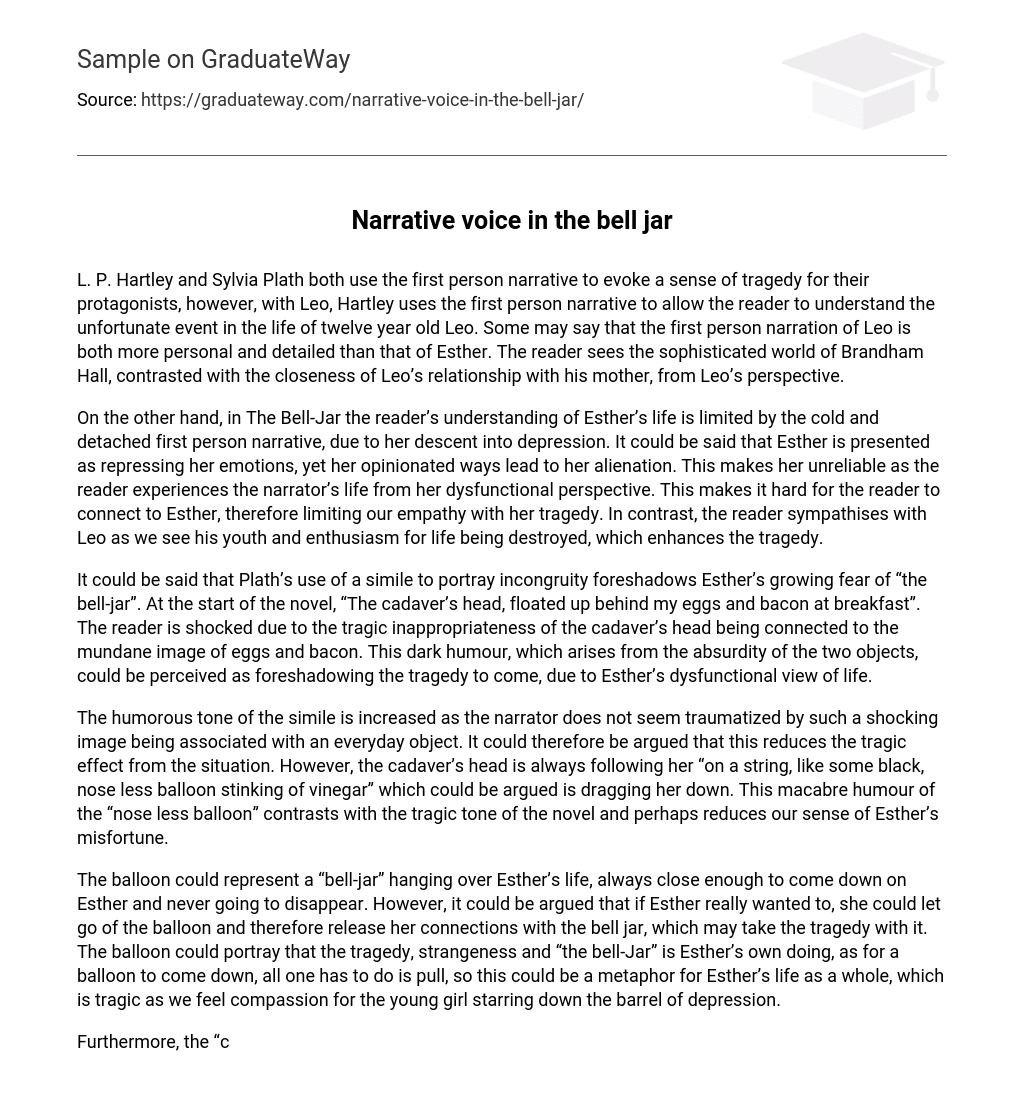Both L. P. Hartley and Sylvia Plath employ the first person narrative to elicit a feeling of tragedy for the main characters. Nevertheless, in Leo’s case, Hartley utilizes the first person narrative to enable the reader to comprehend the unfortunate occurrence in the life of twelve-year-old Leo. Some argue that Leo’s first person narration is both more intimate and comprehensive compared to Esther’s. Through Leo’s perspective, the reader observes the refined atmosphere of Brandham Hall juxtaposed with the close bond between Leo and his mother.
Alternatively, in The Bell-Jar, Esther’s descent into depression limits the reader’s understanding of her life due to the cold and detached first-person narrative. While it could be argued that Esther represses her emotions, her opinionated nature ultimately leads to her alienation. Consequently, the reader experiences the narrator’s life from a dysfunctional perspective, making Esther unreliable. As a result, it becomes challenging for the reader to connect with Esther and thus restricts our empathy towards her tragic circumstances. In contrast, Leo’s destruction of youth and enthusiasm for life evokes sympathy from the reader, intensifying the tragedy.
Plath’s use of a simile in the beginning of the novel, where “The cadaver’s head, floated up behind my eggs and bacon at breakfast,” could be seen to foreshadow Esther’s growing fear of “the bell-jar.” The connection between the cadaver’s head and the mundane image of breakfast shocks the reader, highlighting the tragic incongruity. This dark humor, resulting from the absurdity of these two objects, can be interpreted as a hint towards the impending tragedy caused by Esther’s dysfunctional perspective on life.
The use of a humorous tone in the simile is amplified as the narrator appears unaffected by the shocking image linked to a common object. This could be seen as diminishing the sorrowful impact of the situation. However, the head of the corpse is persistently trailing behind her “on a string, resembling a black balloon without a nose emanating a pungent vinegar scent”, which could be interpreted as weighing her down. This dark humor of the “noseless balloon” contrasts with the mournful atmosphere of the book and potentially lessens our perception of Esther’s hardships.
The balloon is symbolic of a “bell-jar” that constantly hangs over Esther’s life, always ready to descend upon her and never disappearing. Nonetheless, it can be argued that if Esther truly wanted to, she could release the balloon and sever her connection with the bell jar, potentially leaving behind the accompanying tragedy. The balloon serves as a representation that Esther herself is responsible for the tragedy, peculiarities, and presence of the bell jar. Similar to how pulling on a balloon causes it to come down, Esther’s entire life could be seen as a metaphor for tragedy, evoking our empathy for this young girl facing depression head-on.
Additionally, the novel mentions the “cadaverous face” on the final page, indicating that this structural feature was likely intentional by Plath. This suggests that the cadaver has haunted Esther throughout her life, tragically restricting her ability to live a “normal” life. It demonstrates that Esther may never escape the metaphorical “bell-jar,” even when there seems to be a glimmer of hope at the end of the novel.





